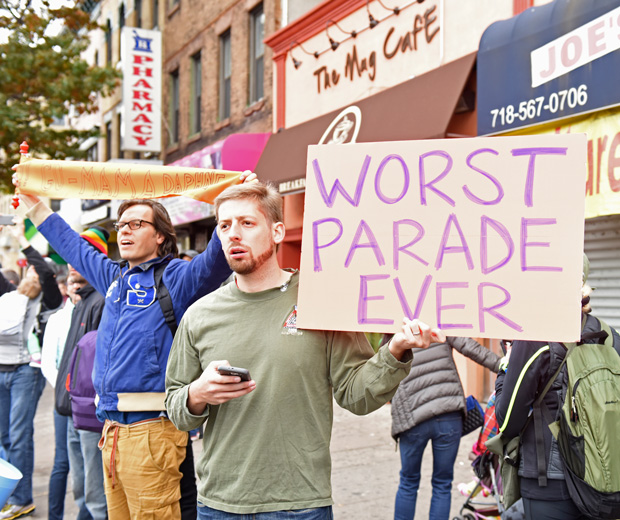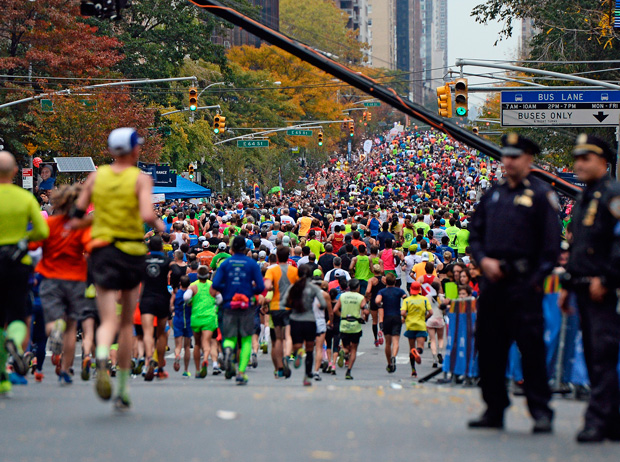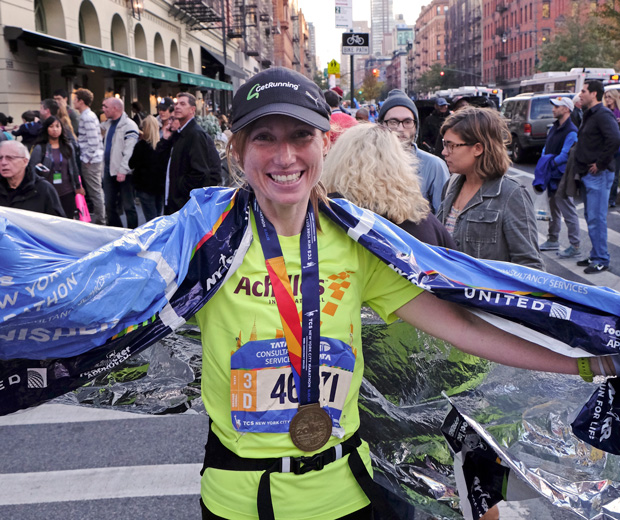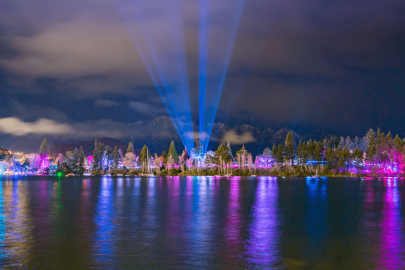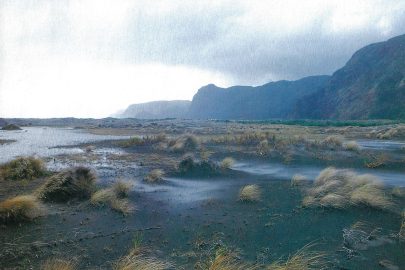Feb 5, 2016 Travel
Staten Island is a corner of New York City so overlooked that the guidebooks recommend taking the trip there without actually setting foot on the island.
Why do it at all? Because the return ferry ride from Lower Manhattan is a top penny-pinching tourist tip — a free harbour cruise with striking views of the Statue of Liberty and Gotham’s skyline.
I’ve stepped off the boat onto Staten Island twice. The first time was three years ago in the aftermath of Hurricane Sandy. I shared the almost-empty ferry with volunteers in mud-caked boots, weary from hauling piles of rubble and distributing food to shocked residents who had lost 24 of their neighbours in the borough worst hit by the storm.
It had taken a few days for the ghastly stories of the Staten Island fatalities to make the news, including the brothers, aged two and four, who had been washed from the arms of their mother trying to escape surging floodwaters; the police officer who had ushered his family upstairs to safety, then been electrocuted in his basement; the woman found dead in her home hugging her black Labrador.
It had taken a few days for anti-New York City Marathon sentiment to grow, too. The marathon was the reason I was there. Like the 50,000 other people who had signed up, I’d trained for months to run 42.2km through the city’s five boroughs, from the start line on Staten Island. But the idea that the city’s resources would go into the event when drowned bodies were turning up nearby became untenable.
Despite his declarations to the contrary earlier in the week, Mayor Michael Bloomberg pulled the plug. The marathon was cancelled. Catching the ferry that sullen day on a moody sea, it was hard to argue.
Anyone who had entered the 2012 marathon could defer their place for up to three years. I planned to head straight back in 2013, until two little blue lines surprised me on a stick. Before even breaking the baby news to friends and family, I rang coach Kiri Price at Auckland running clinic Get Running.
A mother of three who completed her 100th marathon this year, Price wisely advised me against attempting a marathon while eight months pregnant, or with an infant. “The time goes so fast, you’ll want to spend it with your baby,” she said.
Looking back from the other side of the motherhood fence, I’m surprised she didn’t scream, “Are you crazy?” down the phone.
In May 2015, six months out from marathon day, I sent an SOS to Gaz Brown, head trainer and founder of Get Running. The email read: “New York — The Revenge Run. Can you please help?”
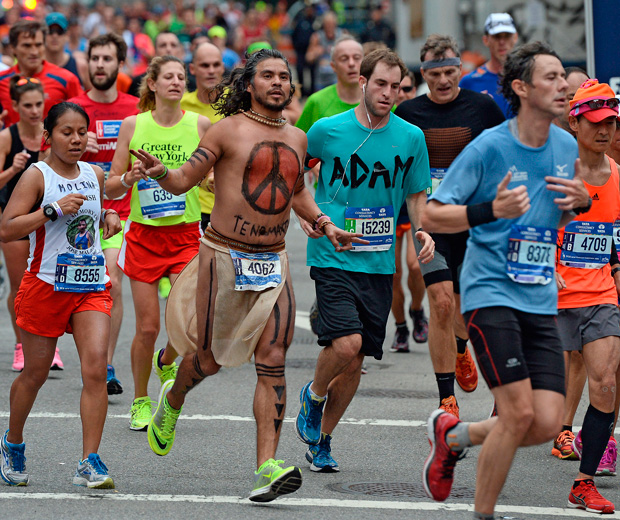 The New York marathon’s colourful participants.
The New York marathon’s colourful participants.
When people say they can’t fathom running a marathon, they don’t know Brown. He’s the guy who gets you through — whatever your ability. When I first called on Brown for marathon help (a crafty excuse for a trip to Paris in 2011), I ticked off my training schedule on a printed spreadsheet. This time, the training is recorded on a fancy app, with runs flipping satisfyingly from red to green as I complete them.
As more green squares appear in my calendar throughout winter, I notice that instead of saying “busy” and groaning when people ask how I am, I reply, “I’m feeling balanced.” I’m no less busy, but still managing to fit in my three solo runs a week plus a longer one with the Get Running crew on Saturday. I come home from my runs feeling calmer and more energetic. I’m getting faster and going further. I dare to entertain ideas of what my marathon time could be.
Through the year, I check in with the athletes from charity Achilles International at their Sunday morning training sessions at the AUT Millennium sports institute in Mairangi Bay. Achilles is the reason I’m running the marathon in the first place. On a previous trip to New York, I had watched the Achilles competitors, in matching fluorescent T-shirts, cross the marathon finish line hours and hours after the elite athletes had split the winner’s ribbon and disappeared for their celebratory meals. These runners all had disabilities of some sort — missing limbs, blindness, paralysis, some way in which their bodies weren’t functioning the way most of us are used to — yet they covered the distance. I decided then to fundraise and run the marathon for the charity.
Achilles has taken a team of disabled athletes to the New York Marathon every year since 1993. The 2015 group included Mike Lloyd and Tamati Pearse, who are blind, Nic Miller-Clendon, who runs when her multiple sclerosis makes even walking difficult, and Ian Winson, who lost both legs and suffered a damaged arm and traumatic brain injury when he was caught in an underground gas explosion in Onehunga. Most double-leg amputees use a hand-cranked wheelchair, but due to his bad arm, Winson powers a cycle using his prosthetic legs.
A month before the marathon, I wake at 3am with stabbing pains. I spend all week in bed with a stomach virus, haunted by the red squares on my training schedule. When my energy finally returns, I head for the Waitakeres determined to make up for lost time — and wince at a twinge in my right knee. I stretch it out, assuming it needs warming up after such a sedentary week, but just 5km into what is supposed to be a 21km run, I am doubled over and sobbing in a Glendene bus stop. There are only three weeks until race day and I can’t run without a horrible graunching pain in my knee.
I should be reaching the peak of my preparation by now, ticking off 30km runs. Instead, I go to see an acupuncturist, who shoots electric pulses through my knee and into my lower back. I have sports massages to banish lumps from my muscles. Although the pain is in the knee, a physio diagnoses a problem in my right hip brought on by my posture pulling on my IT (iliotibial) band — the ligament that runs down the outside of the thigh from the hip to the shin — leading to friction in the knee. It’s a common running injury.
I can’t run, so I strap a clammy flotation belt around my waist and windmill my legs up and down the Tepid Baths in a desperate attempt to maintain fitness. When friends ask about the marathon, I try to change the topic. I trash all my expectations. I no longer toy with a desired time. I don’t even think about the finish line. All I can focus on is getting to that Staten Island start. Superstorm Sandy stopped me last time. Please, please, I beg my body, don’t thwart me this time.
Travelling internationally with a toddler is an effective if not entirely recommended way to keep your mind off your own anxieties. It isn’t until I get to the marathon expo on the day before the race that it starts to sink in: I might actually run New York City.
I have déjà vu. I was at the exact same expo in 2012 and on the bus going through Times Square with my race number and souvenir T-shirt snuggled in my lap when the news came over the radio that the marathon had been cancelled.
I line up for my bib again, get my T-shirt and am ushered through to the many stalls of athletic products, wondering if I should buy anything branded “New York City Marathon 2015”. Would it be a day I’d want to remember or a horror to forget? I haven’t run longer than 30 minutes in a month.
The marathon is always the first Sunday in November. In 2015, that falls on November 1, the day after Halloween, one of America’s biggest party and parade nights. On the way to the Staten Island ferry, I pass two angels with smudged faces and bedraggled feather wings stumbling along the footpath.
Heading to the start line with a preparation marred by injury and sickness, I am feeling pretty nervous, but take heart that I am in better shape than them.
At least weather conditions are good. I’ve been on hurricane watch all week and am relieved the streaks of grey in the sky harbour no threat of rain. The forecast is for a comfortably cool 15°C.
Hundreds of neon trainers — not a muddy boot in sight — climb on board the ferry and we sail past Ms Liberty raising her torch to the sky. I am finally getting to that start line. I chat with the woman next to me as we board a bus to take us through Staten Island’s pristine suburban streets, which bear no scars from Sandy. Michelle has her own frightening hurricane story. Her home in New Jersey had no power or water for two weeks, and a falling tree had burst through her roof.
Like me, she’s doing her second marathon. We ran exactly the same time for our first (four hours and 39 minutes) and were both secretly aiming for better this time until being troubled by injury (shin splints in her case). We exchange phone numbers and when she texts me later to ask how I got on, she calls us “kindred spirits”.
I like to think I could have struck up a conversation with anyone on that ferry or bus and found a similar connection. Everyone has their own reasons for running a marathon and their own barriers to getting there. Just being on that boat forms a kinship with the other competitors, even the guy muttering, “This is a really bad idea. There are so many other things I could be doing today.”
It’s a deliberate symbol of city unity that the marathon passes through all five of New York’s boroughs, though this is slightly undermined by the fact that after going through the rigmarole of catching a ferry and bus to get to the Staten Island start line, when the gun goes off we run, a heaving crowd, straight across the Verrazano-Narrows Bridge and into Brooklyn. “It’s up to you, New York, New York,” croons Frank Sinatra over the loudspeaker.
Descending the bridge, I can see Manhattan’s glimmering towers tickling the clouds. They seem a ridiculously long way away.
“This is Brooklyn,” a man yells at the bottom of the bridge, and a thunderous boom from giant Chinese drums follows us around the corner. I can’t help grinning. I’m at the 2km mark.
A woman holds a sign that reads: “You still look pretty.”
We carve up through Brooklyn on long, straight Fourth Ave and I fall into a rhythm, feeding off the encouragement of the crowd and the beat of the live bands dotted along the course. There is a massive screen set up in downtown Brooklyn and I happen to run past just as Kenyan Stanley Biwott is bounding into Central Park and towards the finish line. He wins in two hours, 10 minutes and 34 seconds. I plod on.
I recognise a corner in Bedford-Stuyvesant near where I stayed during the hurricane. There are cheering spectators outside a petrol station where three years ago there had been queues of frustrated people holding jerry cans. I put my regrets to rest. It would have been awful to take over the streets of New York at that damaged time.
A funny thing happens to your thoughts when you run. They’re there and then they’re not. I struggle to recall what was going through my head for 42km. I have concerns about my knee, and concentrate on running with good form to protect it from any strain. I struggle to calculate the maths of when I need drinks and food along the way.
I scope the meeting places I have arranged with my support crew — my partner, daughter and a friend are criss-crossing the city to cheer me on. Mostly, like everyone else that day on the road and crowded along the sides, I am people-watching.
A crowd of two million gathers on the streets of New York to watch. A palpable symbiotic relationship forms between runner and spectator. As a runner, you lap up the respect and appreciation for the effort you’re putting in and project (I hope) gratitude for the support, which buoys every step.
Never is the importance of the crowd’s support more obvious than when it is gone. We cross from Queens into Manhattan’s Upper East Side, over the Queensboro Bridge, which is off limits to spectators, plunging the course from cheers and music to ponderous puffing and pounding feet. Suddenly, the pain in my knee rings in my ears. The incline of the bridge is slight but it feels mountainous.
I drop my pace as I pass the 25km mark. I’m having doubts now about whether I can make it. I mentally chop the course down to manageable chunks, focusing first on getting over the bridge and to 32km. From there, I tell myself, it is only 10km.
The bridge stretches on. I slow again and then spot an Achilles runner with a missing right leg, striding along on her prosthetic blade. Her resolve puts my niggly right knee into perspective. I give her a big cheer and accelerate around the corner into Manhattan.
During training, Gaz Brown warned me to think of entering Manhattan as the halfway point, even though I have just over 16km to go. Buildings tower above. The whole of First Ave is blocked off, with crowds up to 10 people deep on the footpaths. They are all whooping. In that moment, the other runners and I own New York, and as tired and achy as I am, I decide to enjoy it.
The kaleidoscope of runners stream up First Ave for as far as I can see. Somehow, the crowd’s din drowns out my knee and I keep running up to 125th St and over the Willis Ave Bridge.
A DJ booming Alicia Keys’ “Empire State of Mind” welcomes us to The Bronx. By now I’m sick of the sticky space-food running fuel and lunge hungrily for an outstretched banana. I’ve been dreaming of it since I saw a guy holding a sign a couple of hours back that read, “This seems like a lot of work to do for a free banana.”
I’m still running, but slowly. My thoughts are reduced to mantras. Keep calm. Keep going. Run tall.
I have completely missed all my rendezvous points with my support crew. “They should have a sign,” I huff. It turns out they have scrawled my name on a pizza box and have been tracking me on the marathon app as well as texting me their location. I have the mental capacity to focus on one thing only, and that is getting to the finish line.
At 36km I take a toilet break, come out of the portaloo and have a fight with my knee, which seems to think the job is over. It crunches. It groans. I step out tenderly, then forcibly crank it into action. I refuse to stop now.
I am on the prettiest stretch of the course. The majestic buildings of Fifth Ave are on my left. The autumnal colours of Central Park shimmer on my right. I pass a sign saying: “Warning: Awesome Sense of Achievement Approaching”. I speed up. I actually speed up. I am going to make it. “You’re nearly there,” someone yells, which is the one line guaranteed to make every marathon runner hate you, even if you are nearly there.
The late-afternoon sun filters through the leaves. I chug past Columbus Circle and up the last rise to cross the finish line in four hours, 43 minutes and 55 seconds. So much worse than I’d hoped for. So much better than I expected.
Someone puts a medal around my neck. I wipe tears from my eyes thinking of the woman with a wide smile standing 20km back in Brooklyn’s McCarren Park with a sign that read: “I’M PROUD OF YOU PERFECT STRANGER.”

